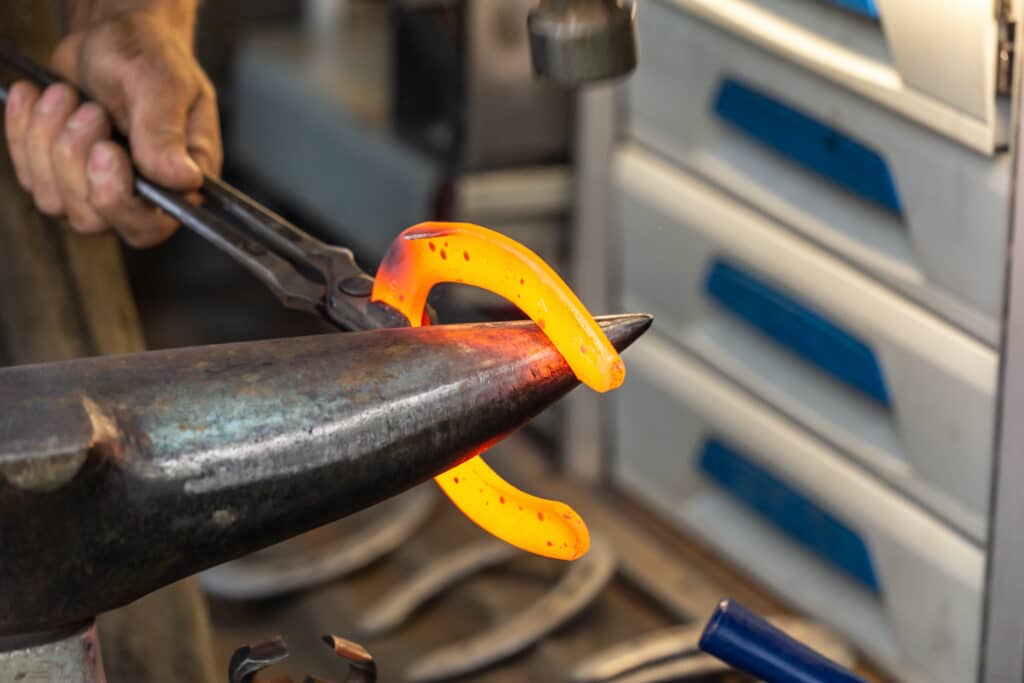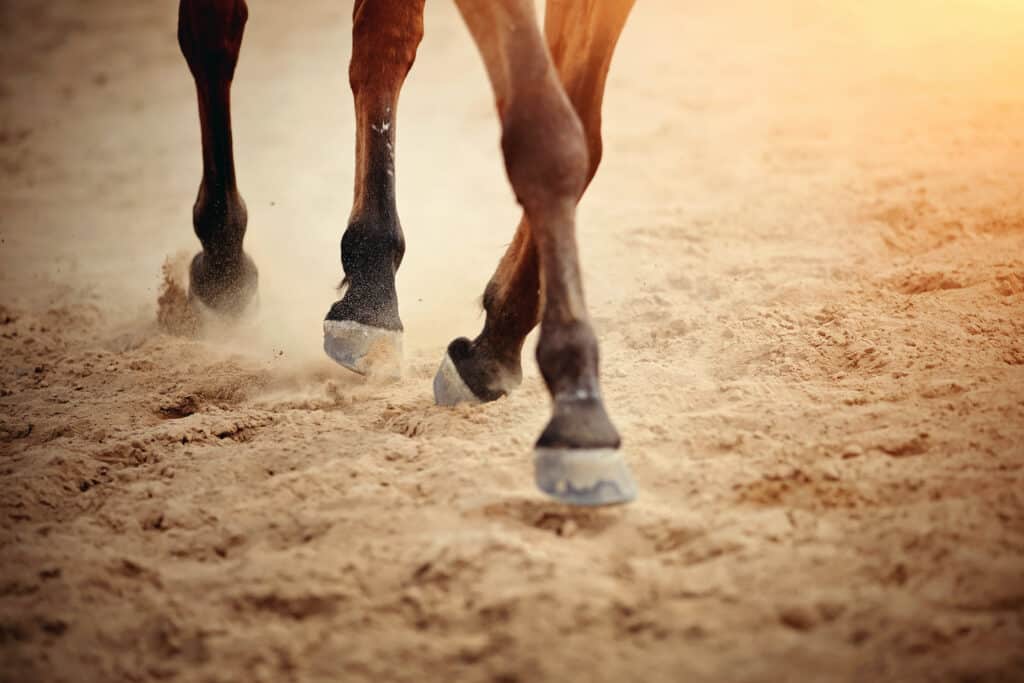Farrier Ricky Gache Dip WCF ATF, discusses the question – do all horses need to be shod?

Many times I have been asked by my clients to shoe a young horse they are just bringing into work or, the new horse they have just bought but, is shoeing necessary for every horse?
Automatically we assume that every horse needs shoes whether it be a racehorse, show jumper, dressage horse or pony clubber; we have always been taught shoes are necessary but, with changing surfaces and different expectations, I believe there are some quite strong cases for not shoeing some horses.
The hoof bears the weight of the horse, protects the internal structures from harm and acts like a spring, storing and releasing energy during different phases of the horse’s stride. It also absorbs concussion and helps pump the blood around the body.
Nailing on a metal shoe impedes the proper function of the hoof:
- It restricts the natural movement of the hoof capsule.
- When on hard ground the shoe raises the frog from the ground surface, so the blood is not pumped round the body as efficiently as a bare foot.
- nails create holes in the hoof capsule weakening the integrity of the hoof wall.
- Metal shoes increase the concussive forces transmitted from the hoof to the bones inside the hoof and, are known to decrease the hoof’s natural shook absorption.
- Hoof structure and performance will be ultimately compromised.
Starting a young horse barefoot is much easier than converting an older horse to barefoot. But, with patience and extra care there are many horses that have made the transition. With the introduction of a wide variety of hoof boots on the market it has become even easier to help the horse to transition to bare foot.
I am not a barefoot activist by any means; not every horse can be barefoot and not every horse can make the transition to barefoot, particularly in the time frame that might be hoped for by the owner.
- Shoes are there for protection and to prevent the hooves from wearing down too quickly.
- They are a very effective tool for aiding a horse to move in a more correct manner; for instance when their movement has been compromised by injury.
- Shoes are necessary for many veterinary cases, such as laminitis. They also can add traction on difficult terrain and aid balance.
- Remedial shoeing is successful in correcting deformities in young foals.
- Also, shoeing horses allows us to make changes or support a foot in ways that we could not accomplish if the horse was barefoot.

There is an argument that shod horses perform better and are generally sounder however, I believe this depends on correct fitting of the shoe and perhaps, a shoe that provides more frog support than the normal horse shoe. There is also the matter of studs and road nails that are necessary for riding in certain conditions and disciplines.
Ultimately what matters most is the trim either for shoes or, barefoot. Regular visits by the farrier are vitally important, as the hooves can become unbalanced in a matter of weeks, which will have a detrimental affect on the muscles, tendons, ligaments and even the back, resulting in an unhappy horse. So, to optimise performance from your horse, regular farrier appointments are a must.
My point is that most people shoe horse just because they think that is what they have to do. However, I believe that in general it is healthier for the equine foot to be barefoot and that most horses could be barefoot, if they had owners that were willing and committed to taking the time to achieve this successfully; this is a discussion you should have with your farrier
